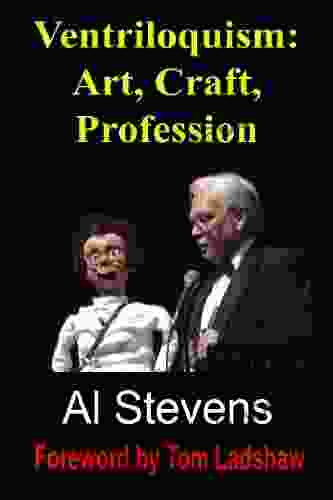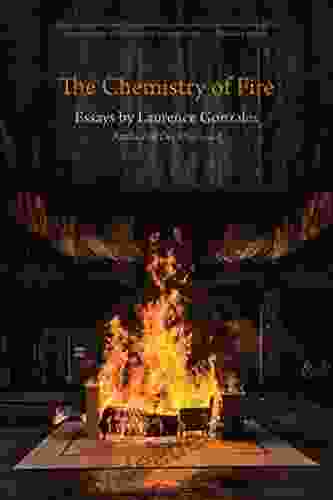The Enigmatic Chemistry of Fire: Unveiling the Mechanisms of Combustion

Fire, a mesmerizing and destructive force, has captivated humanity throughout history. From its primal use for warmth and illumination to its devastating effects in wildfires, fire's enigmatic chemistry has fascinated scientists and sparked countless inquiries. This article delves into the intricate interplay of chemical reactions that give rise to this phenomenon, exploring the mechanisms of combustion, the nature of fuels, and the factors influencing fire behavior.
Understanding Combustion
Combustion, the fundamental process responsible for fire, occurs when a fuel reacts with an oxidizing agent, typically oxygen, in a highly exothermic reaction. This chemical process releases vast amounts of energy, manifested as heat and light, and produces combustion products such as carbon dioxide, water vapor, and other gases.
4.2 out of 5
| Language | : | English |
| File size | : | 888 KB |
| Text-to-Speech | : | Enabled |
| Enhanced typesetting | : | Enabled |
| Word Wise | : | Enabled |
| Print length | : | 248 pages |
| Screen Reader | : | Supported |
| Paperback | : | 71 pages |
| Item Weight | : | 3.04 ounces |
| Dimensions | : | 5 x 0.18 x 8 inches |
The presence of three essential elements is crucial for combustion: fuel, oxygen, and heat. Fuel provides the chemical energy that sustains the reaction, while oxygen acts as the oxidizing agent. Heat, either applied externally or generated by the reaction itself, initiates and sustains the combustion process.
Types of Fuels
The nature of the fuel has a profound impact on the characteristics and behavior of fire. Fuels can be classified into three main types:
1. Solid Fuels: These include materials such as wood, coal, and paper, which require heat to convert into a gaseous state before reacting with oxygen. Solid fuels burn at relatively slow rates, releasing a steady heat output.
2. Liquid Fuels: Examples of liquid fuels are gasoline, kerosene, and cooking oil. These fuels are typically more flammable than solids, as they can vaporize at lower temperatures. They ignite easily and burn quickly, releasing intense heat.
3. Gaseous Fuels: Natural gas, propane, and methane are common gaseous fuels. They are highly flammable and burn with a clean, blue flame. Gaseous fuels allow for precise control over combustion intensity and are often used in industrial applications.
Factors Influencing Fire Behavior
Various factors contribute to the behavior of a fire, including:
1. Fuel Load: The amount and arrangement of fuel available influences fire intensity. A large fuel load can sustain a more vigorous fire.
2. Fuel Moisture Content: Wet fuels burn less efficiently, as energy is diverted to evaporating water. Dry fuels ignite more quickly and burn more intensely.
3. Oxygen Concentration: An abundance of oxygen accelerates combustion, resulting in a more intense fire. Restricted oxygen supply can lead to incomplete combustion and the production of harmful pollutants.
4. Airflow: Wind can fan flames, increasing fire intensity and spread. Conversely, calm air can promote smoldering combustion.
5. Heat of Combustion: The amount of heat released during combustion varies with different fuels. High-energy fuels, such as gasoline, generate more heat and produce larger flames.
Fire Extinguishment Methods
Extinguishing a fire requires interrupting one or more elements of the combustion triangle (fuel, oxygen, or heat). Common fire extinguishing methods include:
1. Water Extinguishment: Water cools the fuel, reduces the oxygen concentration, and inhibits combustion.
2. Carbon Dioxide Extinguishment: Carbon dioxide smothers the fire by displacing oxygen and reducing the available oxidizing agent.
3. Foam Extinguishment: Firefighting foam blankets the fuel, preventing oxygen contact and extinguishing the flames.
4. Dry Chemical Extinguishment: Dry chemicals, such as sodium bicarbonate or potassium chloride, inhibit combustion by interfering with the chemical reactions.
The chemistry of fire is a complex and captivating field that touches upon various scientific disciplines, including chemistry, physics, and engineering. Understanding the mechanisms of combustion, the nature of fuels, and the factors that influence fire behavior is essential for effective fire prevention, control, and extinguishment. Through ongoing research and advancements, we continue to unravel the mysteries of fire and harness its power for the benefit of humanity.
4.2 out of 5
| Language | : | English |
| File size | : | 888 KB |
| Text-to-Speech | : | Enabled |
| Enhanced typesetting | : | Enabled |
| Word Wise | : | Enabled |
| Print length | : | 248 pages |
| Screen Reader | : | Supported |
| Paperback | : | 71 pages |
| Item Weight | : | 3.04 ounces |
| Dimensions | : | 5 x 0.18 x 8 inches |
Do you want to contribute by writing guest posts on this blog?
Please contact us and send us a resume of previous articles that you have written.
 Page
Page Chapter
Chapter Text
Text Story
Story Genre
Genre Reader
Reader E-book
E-book Magazine
Magazine Newspaper
Newspaper Paragraph
Paragraph Shelf
Shelf Glossary
Glossary Bibliography
Bibliography Foreword
Foreword Synopsis
Synopsis Annotation
Annotation Footnote
Footnote Codex
Codex Tome
Tome Bestseller
Bestseller Library card
Library card Narrative
Narrative Biography
Biography Autobiography
Autobiography Encyclopedia
Encyclopedia Dictionary
Dictionary Thesaurus
Thesaurus Librarian
Librarian Catalog
Catalog Borrowing
Borrowing Archives
Archives Scholarly
Scholarly Reserve
Reserve Rare Books
Rare Books Special Collections
Special Collections Literacy
Literacy Study Group
Study Group Thesis
Thesis Book Club
Book Club Textbooks
Textbooks John A Nagy
John A Nagy Jayci Lee
Jayci Lee Ralph Richard Banks
Ralph Richard Banks Leland Ware
Leland Ware Jessica Thorne
Jessica Thorne Ann Larabee
Ann Larabee Margaret Coel
Margaret Coel Kelly Leigh Miller
Kelly Leigh Miller Rajesh Kumar Thakur
Rajesh Kumar Thakur Tom Baird
Tom Baird George Gershwin
George Gershwin Ja Armstrong
Ja Armstrong Jack H Morris
Jack H Morris Surabhi Ranganathan
Surabhi Ranganathan Steven F Viegas
Steven F Viegas Suzanne Harper
Suzanne Harper William Saunders
William Saunders Lesley Williams
Lesley Williams Mette Eilstrup Sangiovanni
Mette Eilstrup Sangiovanni Trisha Ashley
Trisha Ashley
Light bulbAdvertise smarter! Our strategic ad space ensures maximum exposure. Reserve your spot today!

 Harold PowellPick Players in Catch Me If You Can: A Comprehensive Guide to Strategy and...
Harold PowellPick Players in Catch Me If You Can: A Comprehensive Guide to Strategy and...
 Junichiro TanizakiIt All Happened in Renfro Valley: Exploring the History, Music, and Culture...
Junichiro TanizakiIt All Happened in Renfro Valley: Exploring the History, Music, and Culture...
 Dawson ReedVentriloquism: The Art, Craft, and Profession of Al Stevens Ventriloquism is...
Dawson ReedVentriloquism: The Art, Craft, and Profession of Al Stevens Ventriloquism is... Jeremy CookFollow ·9.2k
Jeremy CookFollow ·9.2k Ben HayesFollow ·5.2k
Ben HayesFollow ·5.2k Holden BellFollow ·17k
Holden BellFollow ·17k Marvin HayesFollow ·15.2k
Marvin HayesFollow ·15.2k George HayesFollow ·15.2k
George HayesFollow ·15.2k Michael ChabonFollow ·15.9k
Michael ChabonFollow ·15.9k George MartinFollow ·16.1k
George MartinFollow ·16.1k Christian BarnesFollow ·17.6k
Christian BarnesFollow ·17.6k

 Houston Powell
Houston PowellMusorgsky and His Circle: A Russian Musical Revolution
Modest Mussorgsky was a Russian...
 Barry Bryant
Barry BryantRanking the 80s with Bill Carroll: A Nostalgic Journey...
Prepare to embark on a captivating...

 Kelly Blair
Kelly BlairThe Diplomat's Travel Guide to Festivals, Holidays, and...
India is a land of vibrant culture and...

 José Saramago
José SaramagoFancy Nancy Nancy Clancy: Late-Breaking News!
Nancy Clancy is back with all-new adventures...

 Trevor Bell
Trevor BellGestalt Psychotherapy and Coaching for Relationships: A...
Relationships...

 Federico García Lorca
Federico García LorcaThe Last Love of George Sand: An Enduring Legacy of...
At the twilight of her remarkable life,...
4.2 out of 5
| Language | : | English |
| File size | : | 888 KB |
| Text-to-Speech | : | Enabled |
| Enhanced typesetting | : | Enabled |
| Word Wise | : | Enabled |
| Print length | : | 248 pages |
| Screen Reader | : | Supported |
| Paperback | : | 71 pages |
| Item Weight | : | 3.04 ounces |
| Dimensions | : | 5 x 0.18 x 8 inches |






